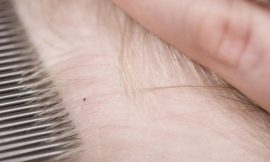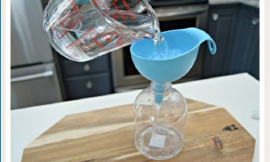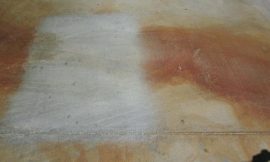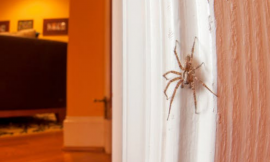
Did you know that the average home can contain up to 100 different allergens lurking in your carpets and upholstery? Accumulated dust, pet dander, and pollen can wreak havoc on your health, especially if you or any family members suffer from allergies or asthma. If you're tired of sneezing, itchy eyes, or feeling unwell, it's time to take control! In this guide, I’ll walk you through practical steps to clean your carpets and upholstery effectively, creating a fresher, healthier living environment. Let’s dive into the world of deep cleaning, armed with tips and tricks to tackle those troublesome allergens!
Understanding Allergens in Your Home
Let's talk about the common indoor allergens that might be lurking in your home. Dust mites, pet dander, mold, and pollen are just a few of the usual suspects. These allergens can easily find their way into your carpets and upholstery, settling down and multiplying if not addressed. Dust mites thrive in warm, humid environments, often hiding in our bedding and carpets, while pet dander can stick to fabrics and air surfaces. Mold loves damp areas, making it a real concern in bathrooms, kitchens, and basements.
Regular cleaning is crucial for managing these allergens effectively. When you don’t clean regularly, you’re allowing these irritants to build up, which can affect your indoor air quality and trigger allergies or asthma.
Preparing for a Deep Clean
Before diving into a deep clean, you need to gather your supplies. Make sure you have a reliable vacuum, carpet shampoo, and upholstery cleaner at the ready. It's also important to choose the right time for cleaning. The ideal conditions include low humidity and good air quality, which can minimize allergen agitations and keep you comfortable while you clean.
Additionally, decluttering your space can make the cleaning process much more efficient. Take some time to clear out items that don’t belong in the room, and organize your space to allow easy access to all areas needing attention.
Cleaning Carpets: Step-by-Step Guide
Now let’s get into the nitty-gritty of carpet cleaning.
Vacuuming: Techniques for Maximum Dirt Removal
Start with vacuuming because this is essential for maximum dirt removal. Use a vacuum with a HEPA filter for the best results. Make sure to go slowly and use overlapping strokes to ensure no area is left behind. Pay extra attention to high-traffic areas and corners where dirt tends to accumulate.
Spot Cleaning: How to Treat Stains Effectively
When it comes to spot cleaning, you’ll want to treat stains immediately. Use a clean, white cloth to blot the stain rather than rubbing it, which can spread the stain further. There are also various stain removers available, but you can also make your own from basic household items like vinegar and baking soda.
Deep Cleaning Methods: Hot Water Extraction vs. Dry Cleaning
For deep cleaning, you’ll have two main methods: hot water extraction and dry cleaning. Hot water extraction is often the most effective as it uses steam and hot water to lift dirt and allergens. Dry cleaning methods, on the other hand, have the benefit of quick drying times.
Recommended Products for Various Carpet Types
Different carpet types require different cleaning products. For synthetic carpets, a mild detergent works well. Wool carpets benefit from special wool cleaners. Always look for products that are free of harsh chemicals to preserve your carpet and improve air quality.
Upholstery Cleaning Techniques
Upholstery also needs special attention.
Types of Upholstery Fabrics and Recommended Cleaning Methods
First, identify the type of upholstery fabric you’re dealing with; different fabrics have different cleaning requirements. For example, natural fibers like cotton and linen can often withstand water-based cleaners, while synthetic fibers can usually handle a wider variety of cleaning products.
How to Vacuum Upholstery Properly
When vacuuming upholstery, use an upholstery attachment to avoid damaging the fabric. Make sure to vacuum crevices and cushions thoroughly, as dust and allergens can hide there.
Spot Cleaning vs. Deep Cleaning Upholstery
Like carpets, upholstery may need spot cleaning or deep cleaning. Spot clean as needed but plan for a deeper clean periodically, especially if your furniture gets frequent use.
DIY Upholstery Cleaner Recipes
You can also whip up some DIY upholstery cleaner. A simple mixture of equal parts water and white vinegar can work wonders for many fabric types, just remember to test it out on a small, hidden area first!
Maintaining Clean Carpets and Upholstery
Once you've cleaned, you want to maintain that freshness.
Regular Cleaning Schedules: How Often Should You Clean?
Establish a regular cleaning schedule. For carpets, aim for a deep clean every 6-12 months, while weekly vacuuming should keep allergens at bay. Upholstery can be cleaned semi-annually depending on usage.
Effective Prevention Strategies: Doormats, Rules for Shoes Indoors, etc.
To prevent allergens from accumulating, invest in quality doormats and establish a no shoes indoors policy. This simple rule can drastically reduce the amount of dirt and allergens that make their way into your home.
Using Air Purifiers and Dehumidifiers for Better Air Quality
Finally, consider incorporating air purifiers and dehumidifiers into your space to enhance air quality. Air purifiers can filter out allergens, while dehumidifiers help control moisture, making your home less hospitable to mold and dust mites.
Professional Cleaning vs. DIY: What’s Best for You?
Sometimes, it might be worth considering professional cleaning services.
When to Call in the Professionals
If you have persistent stains or a significant buildup of allergens that you can’t tackle on your own, that’s when you should call in the experts. They have the tools and expertise to handle tough jobs.
Cost Considerations and the Value of Professional Cleaning
While professional cleaning can be an upfront expense, think about it as an investment. Clean carpets and upholstery not only look better but can improve your home’s air quality and prolong the life of your fabrics.
How to Choose a Reputable Cleaning Service
When selecting a professional cleaning service, look for reviews and references to ensure they are reputable. Check if their cleaning methods are safe for your specific carpet and upholstery types.
By taking these steps, you can enjoy a cleaner, healthier home environment that's friendly to all its inhabitants.
Conclusion
In conclusion, tackling allergens in your carpets and upholstery is essential for maintaining a healthy home environment. By following these thorough cleaning techniques and maintaining a regular schedule, you can significantly reduce allergens and enhance air quality. Start implementing these strategies today, and experience the difference in your health and comfort! If you're ready for a fresher living space, get started on your deep cleaning journey now!







